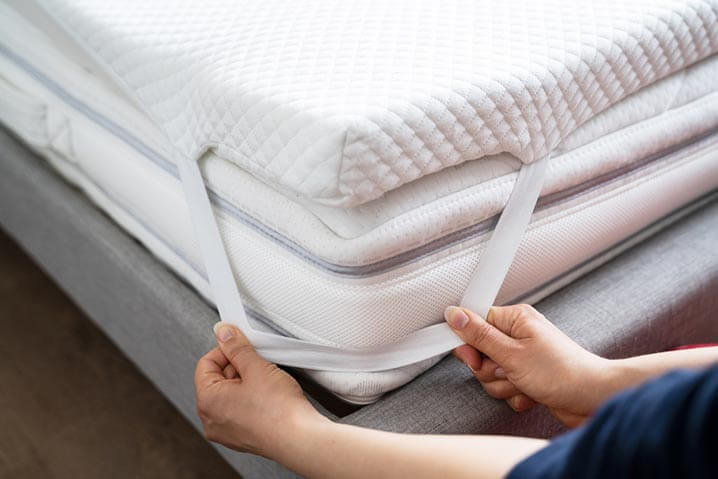
A mattress topper is an excellent solution for those seeking to enhance their sleeping experience without buying a new mattress. These toppers come in various types, each with unique features, benefits, and drawbacks. Choosing the right mattress topper can be overwhelming, especially if you’re unfamiliar with the different types. This guide will explore the various types of mattress covers or pads available and help you choose the one that’s right for you.
Types of Mattress Covers
Memory Foam Mattress Covers
Memory foam mattress protectors are the most popular and widely used. These toppers conform to your body’s shape and support your spine, joints, and pressure points. Memory foam toppers are also good for motion isolation, meaning you won’t feel your partner’s movements at night.
Memory foam toppers come in various thicknesses, densities, and firmness levels. The thicker the topper, the more cushioning and support it provides. High-density memory foam toppers are firmer and offer more support, while low-density toppers are softer and offer less support. When choosing a memory foam topper, consider your body weight, sleeping position, and personal preferences.
Latex Mattress Covers
Latex mattress pads are made from natural or synthetic latex. These toppers offer support, comfort, and durability. Latex toppers are also hypoallergenic and antimicrobial, making them ideal for people with allergies or asthma.
Latex toppers are available in different firmness levels and conform to your body’s shape, providing pressure relief and spinal support. The toppers are also breathable, allowing air to circulate and keeping you cool during the night.
Gel Mattress Pads
Gel mattress pads are made from gel-infused foam or gel beads. These toppers offer good support, pressure relief, and temperature regulation. Gel toppers are also good for motion isolation, meaning you won’t feel your partner’s movements at night.
Gel toppers come in various thicknesses and firmness levels, and they balance softness and support. The toppers are also breathable, allowing air to circulate and keeping you cool during the night.
Which Mattress Cover Is Right for You?
Choosing the right mattress protector depends on various factors. Here are a few key things to consider when choosing a mattress protector.
Sleeping Position: If you’re a side sleeper, consider a memory foam or latex topper, as they offer good pressure relief and spinal support. If you’re a back sleeper, consider a firm memory foam or latex topper, as they provide good support and alignment for your spine. If you’re a stomach sleeper, consider a firm latex or gel topper, as they offer good support and prevent sinkage.
Body Weight: If you’re heavy, consider a thicker and denser topper, such as a high-density memory foam or latex topper, as they offer more support and prevent sinkage. Consider a thinner and softer topper, such as a low-density memory foam or feather topper, if you’re a lightweight person.
Allergies or Asthma: If you have allergies or asthma, consider a hypoallergenic and antimicrobial topper, such as latex or wool. These toppers are resistant to dust, mites, and other allergens, making them ideal for people with allergies or asthma.
Budget: Your budget also plays a role in determining the type of mattress topper that’s right for you. Memory foam and latex toppers are more expensive than wool toppers. Gel toppers are also more expensive than memory foam and latex toppers.
In conclusion, choosing the right mattress topper depends on your personal preferences, sleeping position, body weight, allergies or asthma, and budget. Memory foam, latex, wool, and gel toppers are the most common mattress protectors. Each type offers unique features, advantages, and disadvantages. Consider these factors and choose a topper that offers the best comfort, support, and value for money.

Aimee Garcia is a Marketing Consultant and Technical Writer at DailyTechTime. She has 5+ years of experience in Digital Marketing. She has worked with different IT companies.

